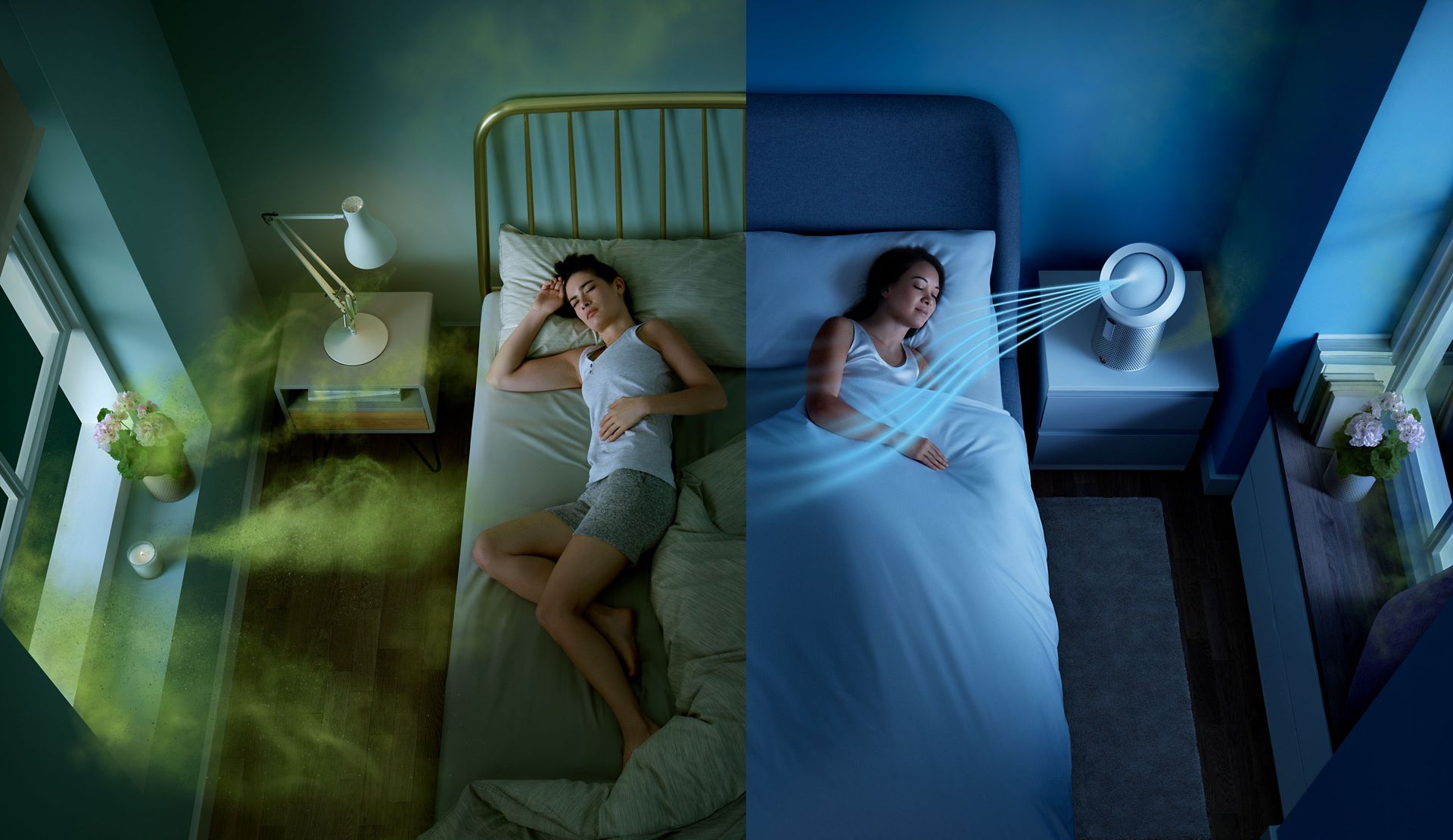-
Australia
Copyright © 2025 Powered by BCI Media Group Pty Ltd
Confirm Submission
Are you sure want to adding all Products to your Library?
Contact Detail

We spend up to 90% of our time indoors1 and over 17 years asleep. The environment that we sleep in contains a spectrum of particles, and with an average of 8 hours being spent asleep every night, we’re continuously exposed to air pollution in the bedroom.
The effects of indoor air pollution on sleep can decrease both the quality and potential benefits that come with it.
So why is air quality worse at night? Air quality can change by season, location, humidity and temperature, and is affected by materials and other conditions in the home. We break down how air quality affects sleep, plus give you tips for how to achieve a healthier indoor environment.
The effects of indoor air quality on sleep
Studies in adults2 and children3 measured the relationship between air quality and sleep, showing that indoor air pollution affects the following factors:
Let’s walk through some of the biological particles and other pollutants which compromise air quality and affect overall sleep.
Bedroom dust
We share our bedrooms with a range of biological particles and allergens, and these are often inhaled during sleep. Mattresses, pillows and bedding can collect house dust mites, allergens, bacteria and fungi from humans and pets. These biological materials can accumulate in settled dust and they're easily agitated as we move in sleep.
While we might be conscious of the dust in our homes, Dyson’s Global Dust Study reveals that many of us only vacuum when visible dust accumulates. “It is a cause for concern if people only clean when they spot visible dust on the floor, as many dust particles are microscopic in size,” says Monika Stuczen, Research Scientist in Microbiology at Dyson. “In fact, by the time people spot visible dust in the home, it is highly likely that there are dust mites in your home.”
The dust in our home is largely formed of dead skin cells, among other things like pollen, bacteria, and hair. Dust mites – microscopic in size – live off these dead skin cells. The proteins found in their droppings contribute towards the concentration of allergenic material in the home as well as how air quality affects sleep.
Mattresses and bedding products
Some materials used in mattresses and bedding products contain chemicals which can enter indoor air space. Known as Volatile Organic Compounds (VOCs), these chemicals can easily be released into the air at room temperature. The longer we spend in close contact with bedroom pollutant sources, the more VOCs we’re exposed to.
During sleep our bodies also increase the surface temperature of our mattresses. Increases in temperature and humidity create optimal conditions for house dust mites and help release VOCs into the air4, influencing how air quality affects sleep.
Pet hair and dander
Similar to dust mite allergens, pet dander is able to linger in the air for long periods of time. Combining saliva, hair and skin cells, dander sticks easily to furniture, bedding and fabrics. Pet allergies are actually caused by the proteins that stick to pet dander.
Pet allergens in dander are very light, so they remain suspended in the air and can trigger allergic reactions during the night. This can disrupt your sleep pattern and cause discomfort throughout the day.

Pollen
Pollen allergies can cause similar symptoms to dust mite and pet allergies. These can include symptoms such as eye and throat itchiness, sneezing and coughing, a runny or blocked nose, and wheezing.
Different types of pollen spike at different times of the year, but pollen season mainly starts in spring and lasts until autumn. In countries with warm climates like Australia, grass, tree and weed pollen can be present throughout the year. Invisible to the naked eye, pollen can stick to clothes and transfer to bedding, carpets and furniture, contributing to impacted air quality and sleep disturbance.

How to achieve better indoor air quality
Improving your indoor air quality and reducing the number of allergens you’re exposed to can better your sleep and help to reduce the likelihood of allergic symptoms being triggered. Below, we walk through four ways to improve air quality and sleep, and show how Dyson's air treatment technology capture the particles that impact it.
1. Manage your airflow
Dyson’s range of air purifiers help you to take control of your bedroom environment. Multilayered filtration including HEPA H13 filtration capture ultrafine dust and allergens. The combination of filters and powerful airflow enables our machines to capture 99.95% of ultrafine particles5 – so you can breathe cleaner air.
To minimise sleep disturbance, use Night mode for filtration with lower sound levels. Sleep timer enables pre-set intervals of use as the purifier addresses how air quality affects sleep.
2. Wash bedding and vacuum your mattress
Pollen, pet dander and dust mites stick to just about anything – including bedding and laundry. It’s important to wash bedclothes and bedding regularly to improve air quality and sleep. Cleaning your mattress is also an important part of your home cleaning checklist, as particles can lie deep within the fibres.
Using a handheld vacuum cleaner, you can capture allergens that are present in your furniture and mattress. Pair this with a Mattress tool to remove dirt and allergens from your mattress and upholstery. Not only will this support how air quality affects sleep, but it will also help your bed remain a clean and welcoming place to rest.
3. Regulate temperature and humidity
Adjusting your body temperature so you feel comfortable enough to sleep can require warmer air in the cooler months and cold air in the summer months. The Dyson air treatment range lets you control your temperature and maintain a comfortable space.
Take control of the temperature of your air with the Dyson Purifier Hot+Cool™ and the latest in our air purifier technology, the Dyson Purifier Hot+Cool™ Formaldehyde
[1] Klepeis et al 2001; Schweizer et al 2007
[2] Zanobetti et al 2010
[3] Lawrence et al 2018
[4] Boor et al 2014; Liang et al 2014
[5] Tested for filtration efficiency at 0.1 microns (EN1822).



